Borrowing and lending were once regular activities in this building – a bank for many years and now a Wetherspoon pub.
Photographs, illustrations and text about Dylan Thomas.
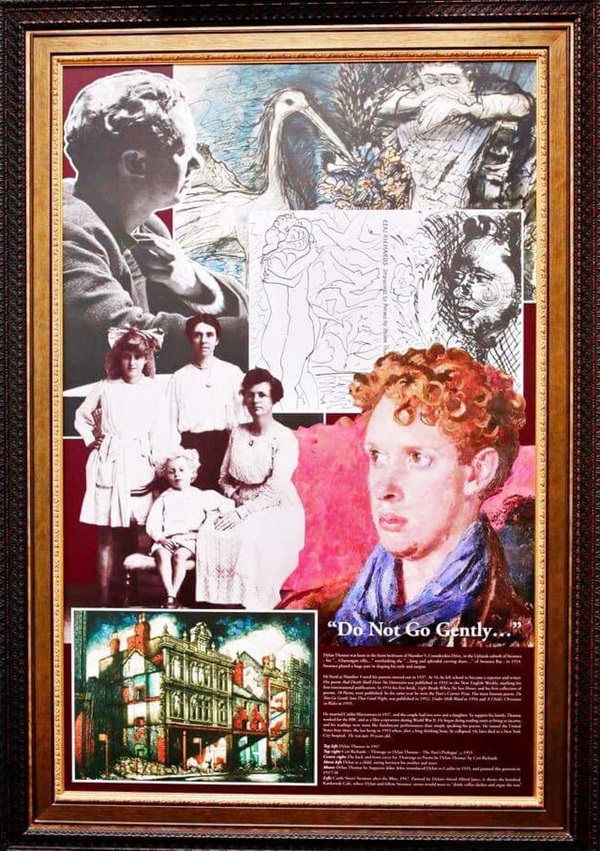
The text reads: Dylan Thomas was born in the front bedroom of Number 5, Cwmdonkin Drive, in the Uplands suburb of Swansea – his “…Glamorgan villa…” overlooking the “…long and splendid curing shore...” of Swansea Bay – in 1914. Swansea played a huge part in shaping his style and output.
He lived at Number 5 until his parents moved out in 1937. At 16, he left school to become a reporter and writer. His poem And Death Shall Have No Dominion was published in 1933 in the New English Weekly, marking his first international publication. In 1934 his first book, Light Breaks Where No Sun Shines, and his first collection of poems, 18 Poems, were published. In the same year he won the Poet’s Corner Prize. His most famous poem, Do Not Go Gentle Into That Good Night, was published in 1952, Under Milk Wood in 1954 and A Child’s Christmas in Wales in 1955.
He married Caitlin Macnamara in 1937, and the couple had two sons and a daughter. To support his family, Thomas worked for the BBC and as a film scriptwriter during World War II. He began doing reading tours to bring in income, and his readings were more like flamboyant performances than simply speaking his poems. He toured the United States four times, the last being in 1953 when, after a long drinking bout, he collapsed. He later died in a New York City hospital. He was just 39 years old.
Top left: Dylan Thomas in 1947
Top right: Ceri Richards – Homage to Dylan Thomas – The Poet’s Prologue, c1953
Centre right: The back and front cover for Drawings to Poems by Dylan Thomas by Ceri Richards
Above left: Dylan as a child, sitting between his mother and sister
Above: Dylan Thomas by Augustus John, John introduced Dylan to Caitlin in 1935, and painted this portrait in 1937.
Left: Castle Street Swansea after the Blitz, 1947. Painted by Dylan’s friend Alfred Janes, it shows the bombed Kardomah Café, where Dylan and fellow Swansea artists would meet to “drink coffee and argue the toss”.
Illustrations, photographs and text about Ceri Richards.
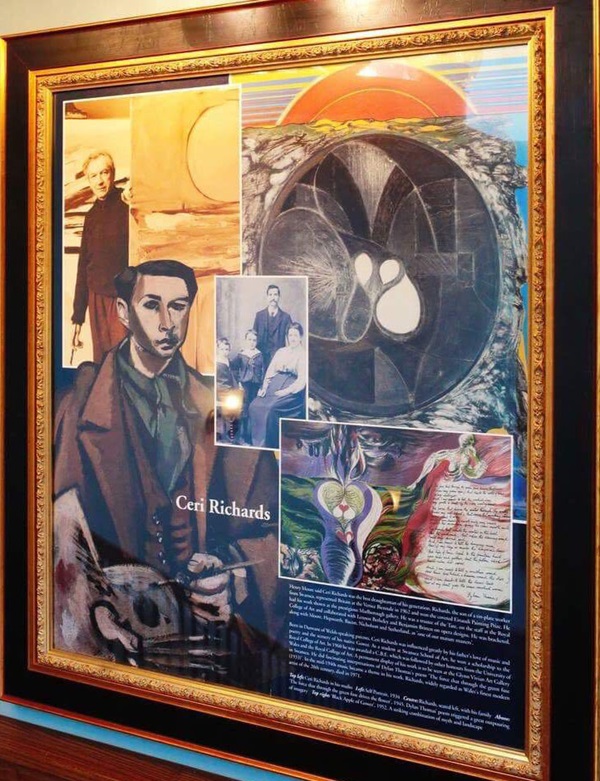
The text reads: Henry Moore said Ceri Richards was the best draughtsman of his generation. Richards, the son of a tin-plate worker from Swansea, represented Britain at the Venice Biennale in 1962 and won the coveted Einaudi Painting Prize. He had his work shown at the prestigious Marlborough gallery. He was a trustee of the Tate, on the staff at the Royal College of Art and collaborated with Lennox Berkeley and Benjamin Britten on opera designs. He was bracketed, along with Moore, Hepworth, Bacon, Nicholson and Sutherland, as ‘one of our mature masters’.
Born in Dunvant of Welsh-speaking parents, Ceri Richards was influenced greatly by his father’s love of music and poetry and the scenery of his native Gower. As a student at Swansea School of Art, he won a scholarship to the Royal College of Art. In 1960 he was awarded a CBE which was followed by other honours from the University of Wales and the Royal College of Art. A permanent display of his work is to be seen at the Glynn Vivian Art Gallery in Swansea. He did fascinating interpretations of Dylan Thomas’s poem The Force That Through the Green Fuse Drives the Flower (1933). In the mid 1940s music became a theme in his work. Richards, widely regarded as Wales’s finest modern artist of the 20th century, died in 1971.
Top left: Ceri Richards in his studio
Left: Self-portrait, 1934
Centre: Richards, seated left, with his family
Above: The Force That Through the Green Fuse Drives the Flower, 1945. Dylan Thomas’ poem triggered a great outpouring of imagery
Top right: Black Apple of Gower, 1952. A striking combination of myth and landscape.
A vintage print showing the North Dock entrance drawbridge, also known as Weavers’ Bridge, looking east away from the town centre.
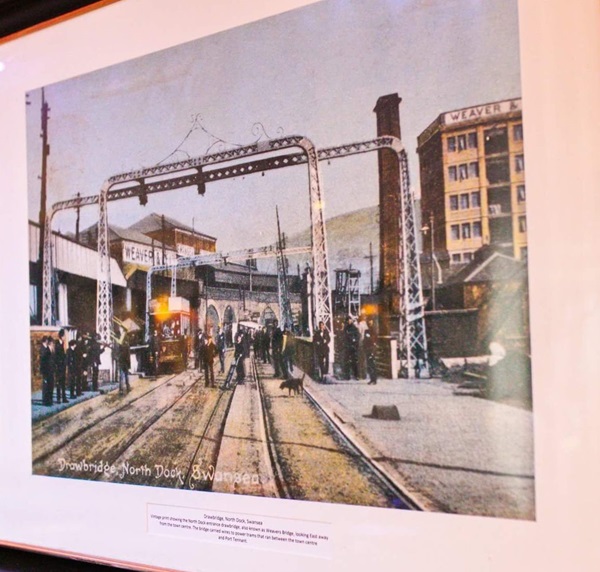
The bridge carried wires to power trams which ran between the town centre and Port Tennant.
A photograph and text about The Goon Show.
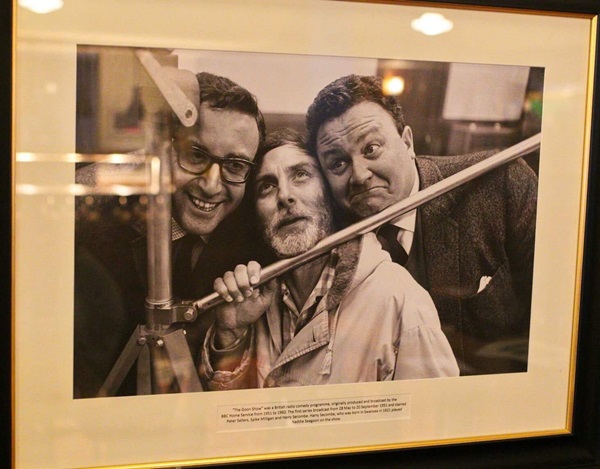
The text reads: The Goon Show was a British radio comedy programme, originally produced and broadcast by the BBC Home Service from 1951 to 1960. The first series broadcast from 28 May to 20 September 1951 and starred Peter Sellers, Spike Milligan and Harry Secombe. Harry Secombe, who was born in Swansea in 1921 played Neddie Seagoon on the show.
A painting and text about Mervyn Levy, 1915–1996.
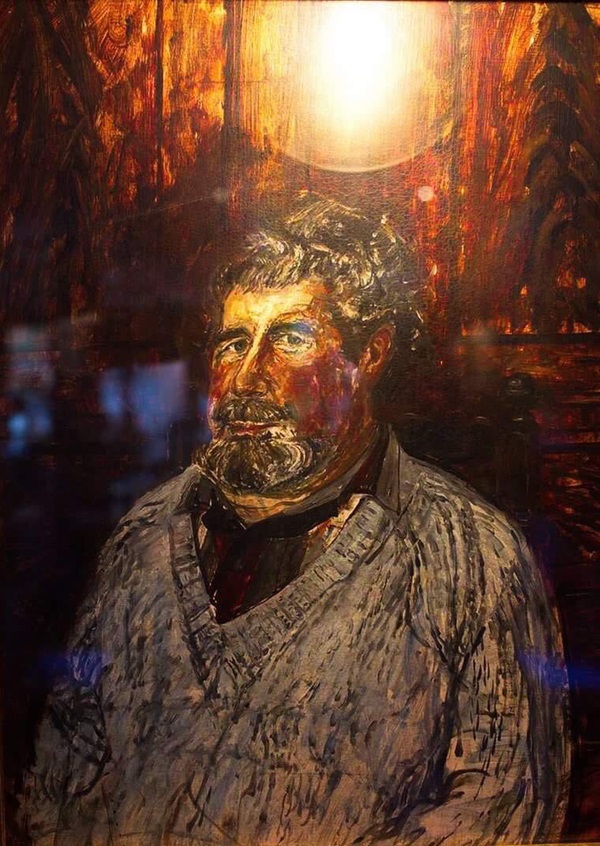
The text reads: Mervyn Levy was a British artist, art teacher and writer; he was born in Swansea on the 11 February. When he was seven years old Levy began attending Mrs Hole’s preparatory school in Mirador Crescent, where he met the future poet, Dylan Thomas, with whom he would associate later as one of ‘The Kardomah Boys’.
A painting entitled Off the Mumbles, South Wales, by Edward Duncan, 1860.
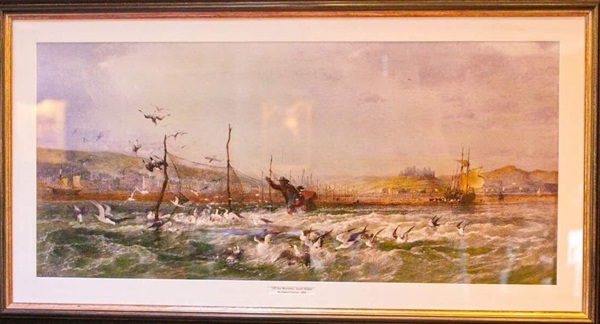
Mixed-media art entitled Rooftops, Swansea II, by Kathryn Le Grice.
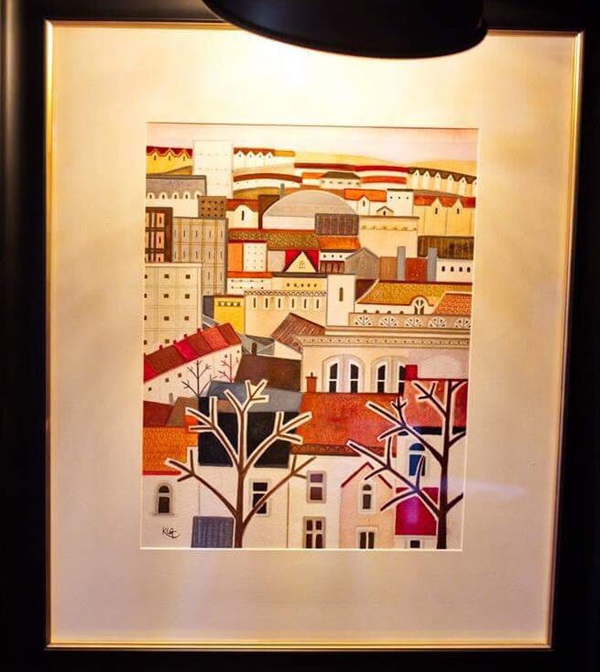
This original painting by Swansea born artist, Kathryn Le Grice was purchased by J D Wetherspoon in 2017.
Kathryn was educated at the Universities of Leeds and Leicester. Since 2004 she has worked as a full-time artist, dividing her time between Wales and California. She is currently based in the San Francisco Bay Area.
Kathryn has exhibited widely in the UK and also the US, has undertaken commissions for Swansea University and Abertawe Bro Morgannwg University NHS Health Trust and has work in the collection of the National Library of Wales.
“When making a piece of art, my primary interest is in observing and developing the patterns we encounter every day within both the natural and urban landscapes in which we live. Rooftops, Swansea II is one of a large series of paintings I have made of my home city. With its many interesting vantage points, Swansea is a place I find endlessly fascinating”.
Original Ratner safes are still in the pub today.
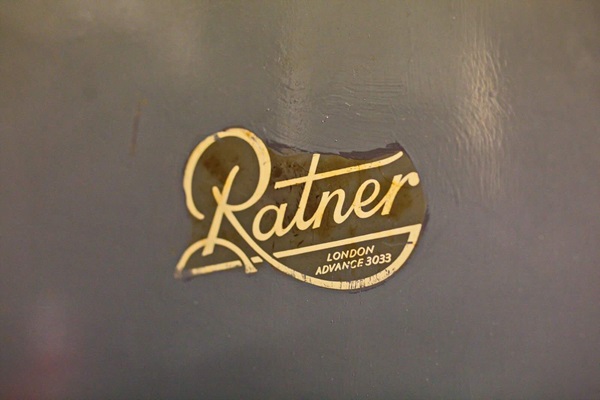
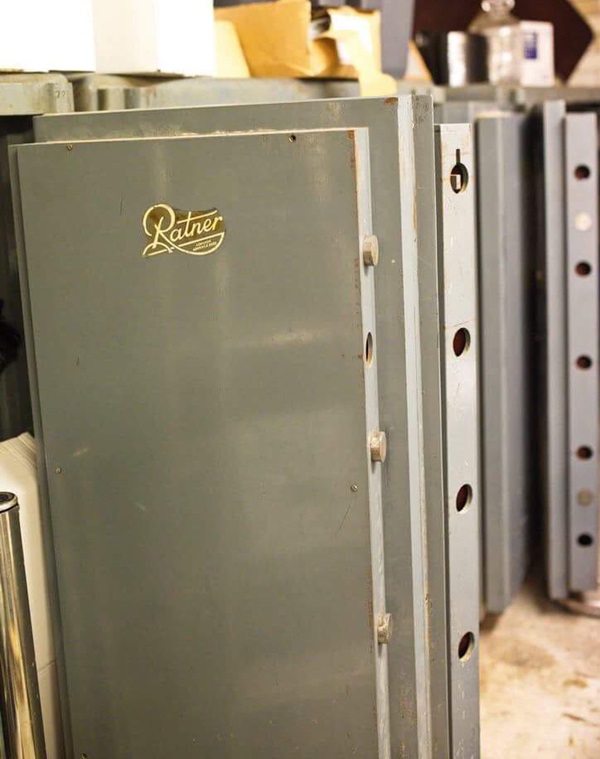
These were used when this building was once a bank.
Internal photographs showing some of the original design features of the building.
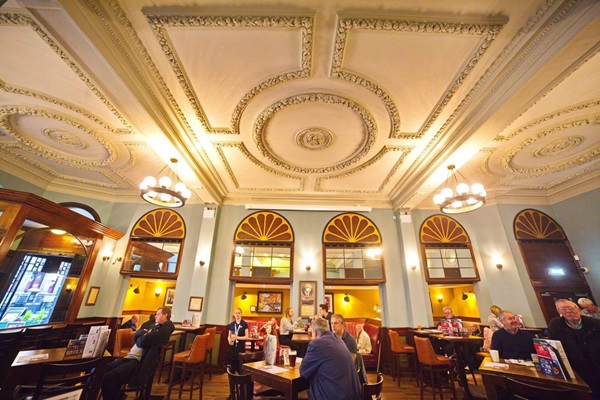
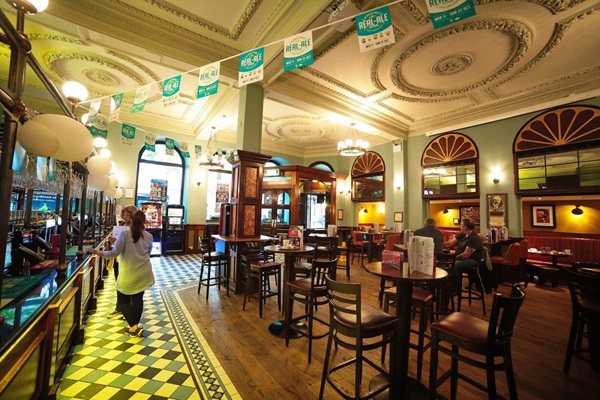
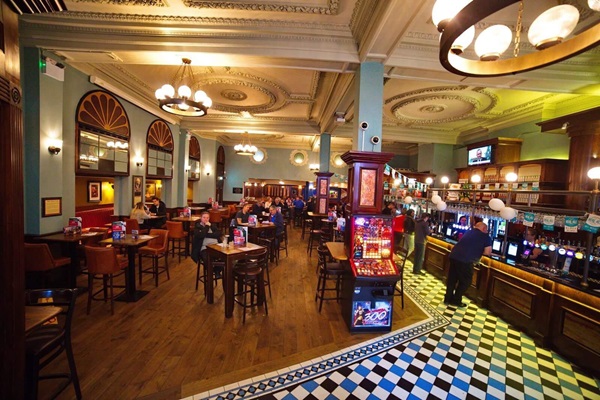
External photograph of the building – main entrance.
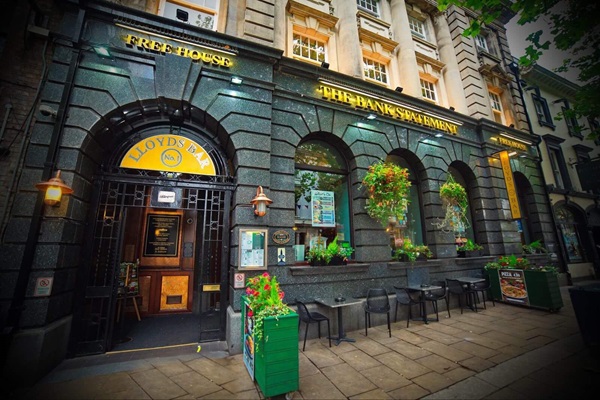
If you have information on the history of this pub, then we’d like you to share it with us. Please e-mail all information to: pubhistories@jdwetherspoon.co.uk